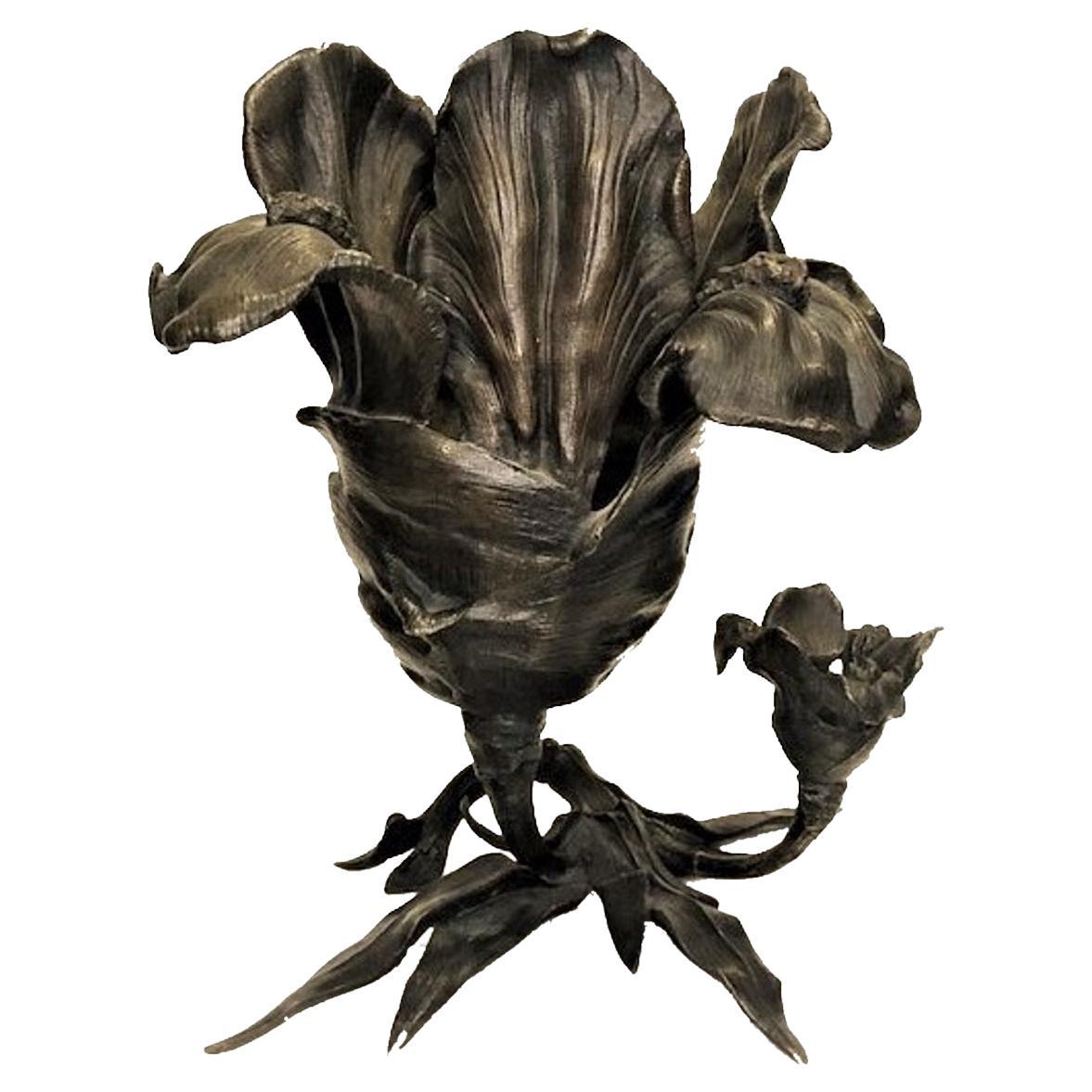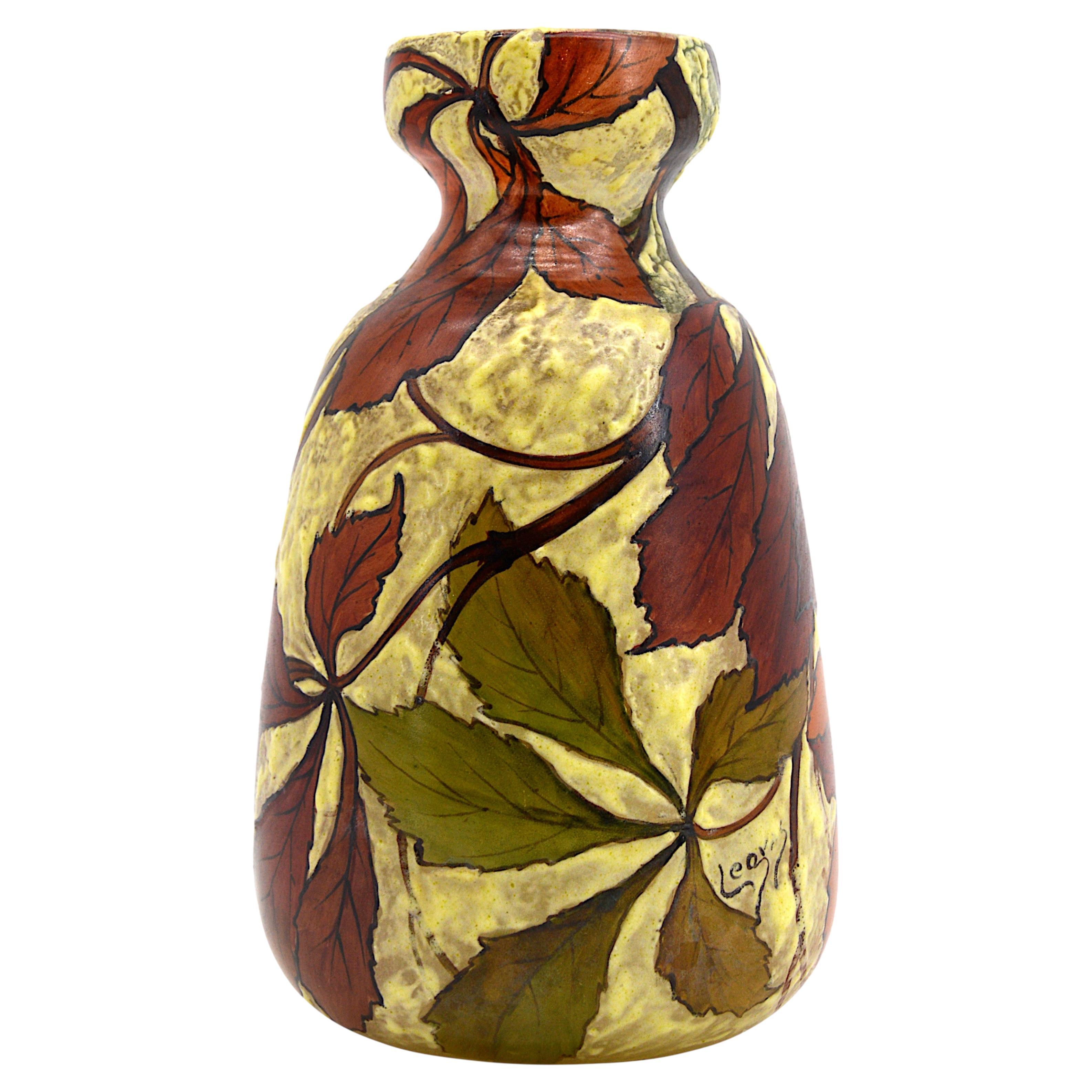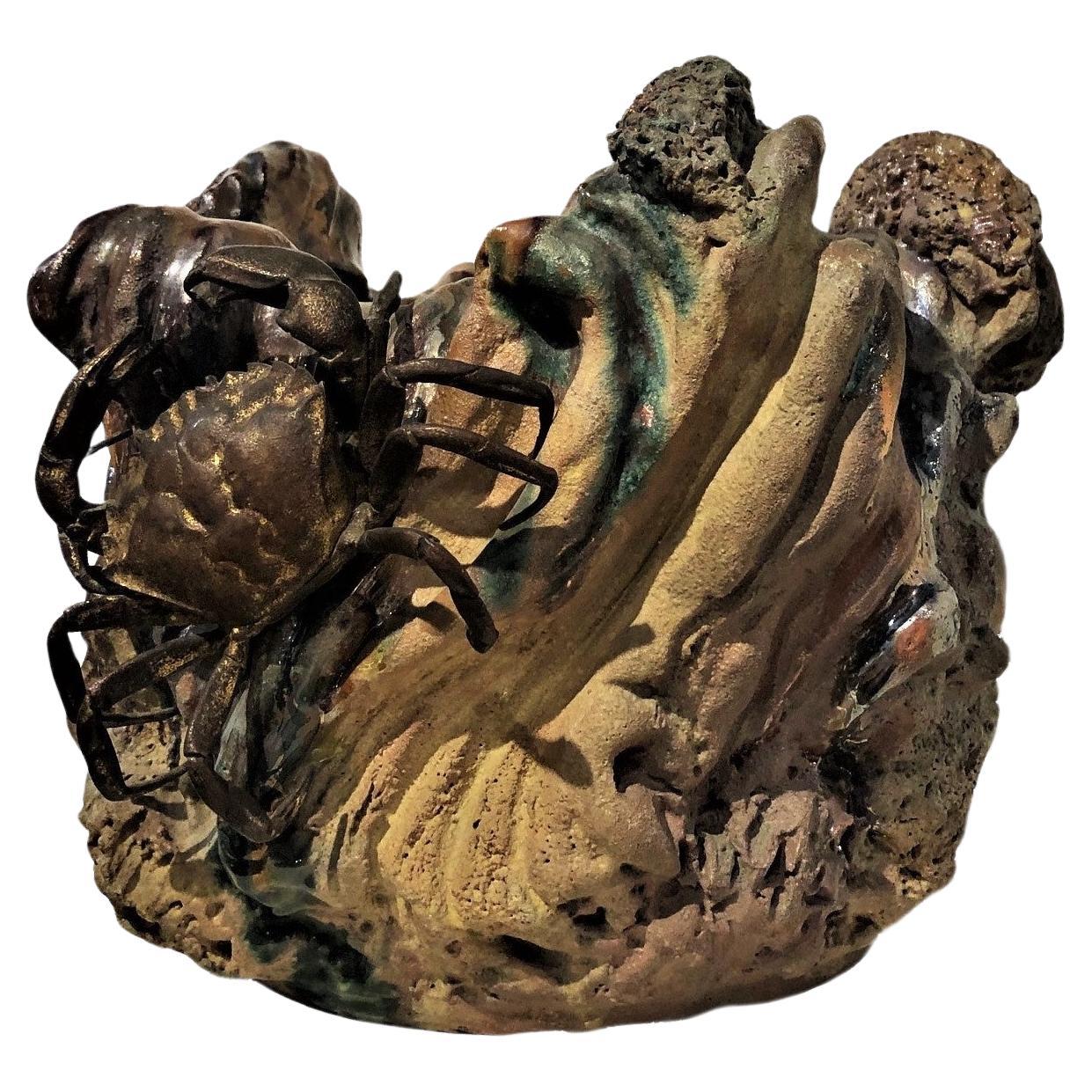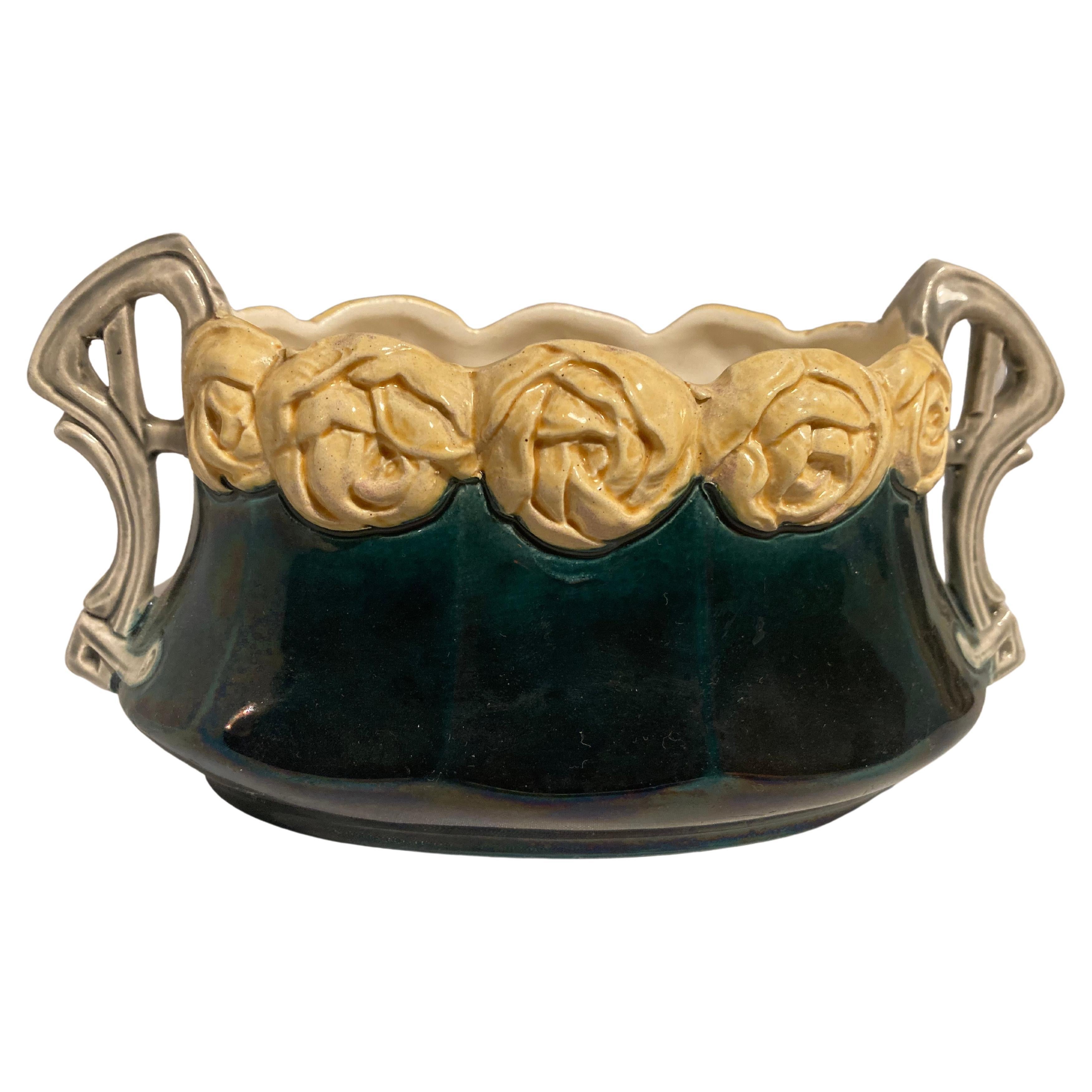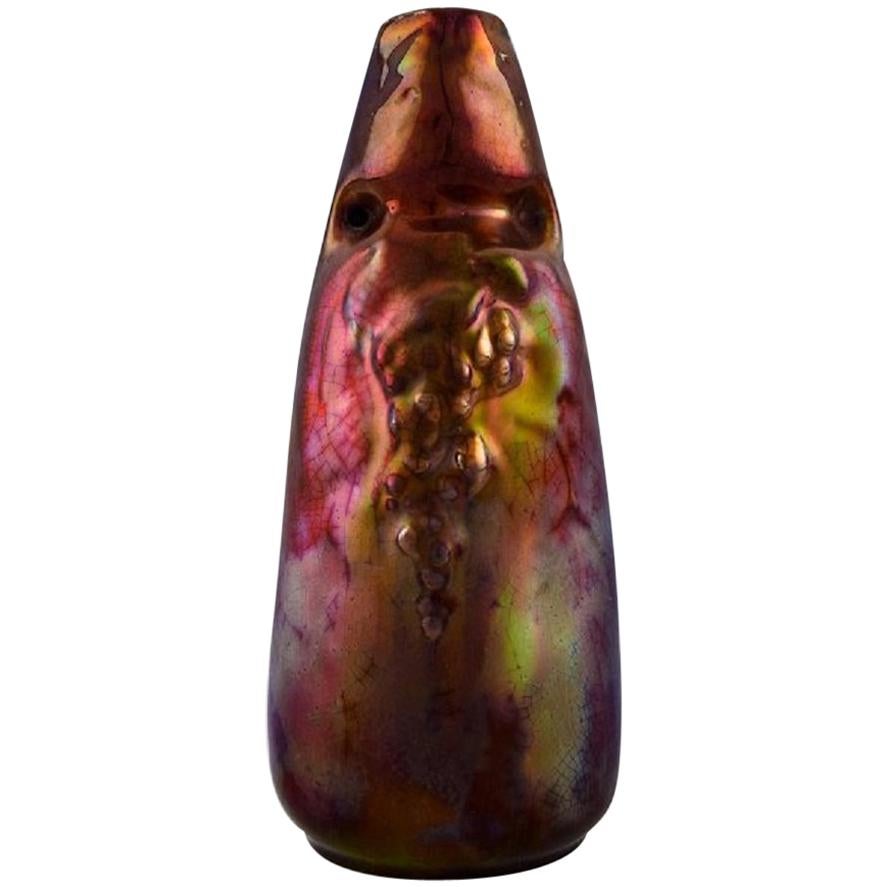Items Similar to Charles Vital-Cornu, French Art Nouveau Bronze Sculptural Floral Vase, 1900s
Want more images or videos?
Request additional images or videos from the seller
1 of 9
Charles Vital-Cornu, French Art Nouveau Bronze Sculptural Floral Vase, 1900s
About the Item
Charles Vital-Cornu (French, 1851 - 1927), Jouffroy’s and Pils’ pupil, he acquired a skillfulness mastery in carving marbles and producing bronzes. He used several patinas in his production. Indeed, if his pieces' embodiments are often golden-brown colored, the hollow part are darker. His figures, hands, faces, and bodies are of a great quality.
Charles Vital-Cornu had participated in numerous annual ‘‘Salons’’ organized in Paris by ‘‘la Société des Artistes Français’’ where he got several awards, such as a mention of Honor in 1880 and 1881, a third class medal in 1882, a travelling grant in 1883, a second class medal in 1886, a bronze medal at the 1889 World Fair and, finally, a silver medal at the 1900 World Fair at the Grand palace in Paris.
The works of this artist are in the permanent collections of the following world museums:
Musée d’Ajaccio : Narcisse enfant
Musée de Grenoble : Le spleen
Musée de Lausanne : Maternité 1905, bronze
Musée de Limoges : Belle vendanges
Musée Galliera, Paris : Archimède.
- Creator:Charles Vital-Cornu (Sculptor)
- Dimensions:Height: 15.75 in (40.01 cm)Diameter: 14 in (35.56 cm)
- Style:Art Nouveau (Of the Period)
- Materials and Techniques:Bronze,Patinated
- Place of Origin:
- Period:1900-1909
- Date of Manufacture:1900s
- Condition:Wear consistent with age and use. Signed by the artist and stamped with foundry mark. There is an original metal insert-vase for displaying fresh-cut flowers in water. We make our best effort to provide a fair and descriptive condition report. Please examine the photos attentively.
- Seller Location:New York, NY
- Reference Number:1stDibs: LU2819311033913
About the Seller
5.0
Vetted Seller
These experienced sellers undergo a comprehensive evaluation by our team of in-house experts.
Established in 1993
1stDibs seller since 2017
68 sales on 1stDibs
Typical response time: 3 hours
- ShippingRetrieving quote...Ships From: New York, NY
- Return PolicyA return for this item may be initiated within 10 days of delivery.
More From This SellerView All
- French Art Nouveau Patinated Bronze Sculptural Iris Vase, ca. 1900Located in New York, NYABOUT IRIS The iris is a special and mysterious flower. Not only because of its striking appearance, but also from an artistic and historical point of view. It is also like a work of art, as though created by Mother Nature. The unique leaves of this plant not only create wonderful shadow casts, but also look as if they were painted by hand. It's no wonder that iris acts as the muse for countless artists, and can be seen in many famous works of art. The iris was first spotted in the time of Pharaoh Thutmose, in 1504 BC. He had the iris inscribed into the wall reliefs of a temple as a sign of his power, as well as decorating his sceptre with motifs of the flower. Since then, the iris has been a symbol of victory in Egypt. But the symbolism of the iris goes further than that. In Japan, the flower represents courage and is the symbol of the boys' festival. In Islamic cultures, the iris is a symbol of prosperity. In Europe, the flower was a popular weapon symbol in the Middle Ages and stood for chivalry. And in Christianity, the iris was seen as a symbol of the trinity because of its three-part flowers. With more than 300 varieties, the iris is now the most popular flower among growers and gardeners following the rose. Countless artists use the iris in their works and the flower is present in all eras. You can see the flower on furniture, vases, jewelry, fabrics, sculptures, coats of arms and much more. Did you know that the iris is also called the sword lily? It's not a coincidence that it used to symbolize physical and emotional pain and suffering caused by a weapon. We also see the flower in religious art, where it's often associated with Mary and Jesus. The iris is also associated with the Greek goddess Iris, where the flower symbolizes reconciliation and divine messages. This is also reflected in many paintings. Finally, the iris is also visible in Dutch and Flemish still-life paintings. This can be in a religious form, incorporated into an object or as a decorative flower. In the Art Nouveau art movement, the iris (along with other plants, such as the birch) was often used as an expression of feminine beauty. With its almost otherworldly appearance, the iris is perfectly suited to the Art Nouveau aesthetic and is featured in many well-known works of art. The poet of that era, Hermann Hesse...Category
Antique Early 1900s French Art Nouveau Planters, Cachepots and Jardinières
MaterialsBronze
- French Art Nouveau Iridescent Stoneware & Bronze Vase or Cachepot, ca. 1900sLocated in New York, NYFrench Art Nouveau Ocean Life Theme Vase Cachepot Iridescent Stoneware & Patinated Bronze Crab Appliqué ca. 1900s ABOUT We present here a most unusual and utterly decorative Fren...Category
Antique Early 1900s French Art Nouveau Vases
MaterialsStoneware
- Japanese Art Nouveau Awaji Ware Art Studio Pottery Flower Vase, ca. 1900sLocated in New York, NYJapanese Art Nouveau Flower Vase Awaji Ware Art Studio Pottery ca. 1900s ABOUT AWAJI WARE ART STUDIO POTTERY Awaji pottery was made on the Japanese island of the same name between...Category
Antique Early 1900s Japanese Art Nouveau Vases
MaterialsPottery
- Japanese Art Nouveau Meiji Period Patinated Bronze Vase, circa 1900Located in New York, NYAlthough unmarked, this rare and important, grand but at the same exquisite patinated bronze vase has just a very few little details, defying the shape of the handles, as well as the...Category
Antique Early 1900s Japanese Art Nouveau Vases
MaterialsBronze
- French Art Nouveau, Female Bust, Gilt Bronze, 1900sLocated in New York, NYSigned under the left shoulder: ”CerNelille”.Category
Antique Early 1900s French Art Nouveau Busts
MaterialsBronze
- Alexandre Vibert, French Art Nouveau Figural Gilt Bronze Ewer, circa 1900By Alexandre VibertLocated in New York, NYAn Art Nouveau gilt bronze lobed ewer by Alexandre Vibert (French, 1847-1909), produced within the early 20th century period, depicting a classical nude female figure on the bank of ...Category
Antique Early 1900s French Art Nouveau Urns
MaterialsBronze
You May Also Like
- Legras French Art Nouveau Enameled Vase, Early 1900sBy François-Théodore LegrasLocated in Saint-Amans-des-Cots, FRRare French Art Nouveau vase by François-Théodore Legras, France, Early 1900s. Very very rare vase with an uncommon shape showing a decor richly enamelled with chestnut leaves. A mus...Category
Antique Early 1900s French Art Nouveau Glass
MaterialsArt Glass
- Small French Art Nouveau Barbotine Jardiniere, 1900sBy Hector GuimardLocated in Köln, NWSmall french Art Nouveau Barbotine Jardinière in the style of Hector Guimard. Very finely worked. Delicate form. very rare. Numbered and marked on...Category
Antique Early 1900s French Jugendstil Planters, Cachepots and Jardinières
MaterialsMajolica
- Montieres Art Nouveau Iridescent Ceramic Vase, Early 1900sLocated in Copenhagen, DKMontieres Art Nouveau iridescent ceramic vase. Early 1900s. Measures: 20 cm x 9 cm. Stamped. In perfect condition.Category
Early 20th Century French Art Nouveau Vases
- 1900s Pair of Art Nouveau Ceramic Neapolitan VasesBy Guido CacciapuotiLocated in Catania, SiciliaTwo rare Art Nouveau ceramic vases made in Italy in 1900. They depicting two children playing. Signs of use and age visible on the photos.Category
Antique Early 1900s Italian Art Nouveau Vases
MaterialsCeramic
- French Art Nouveau Bronze VaseLocated in Milano, ITBeautiful French bronze vase from the Art Nouveau period, made during the early 1900s, fine French manufacture. The vase is made entirely of bronze,...Category
Antique Early 1900s Italian Art Nouveau Vases
MaterialsBronze
- Art-Nouveau Silver Overlaid Vase 1900s in Loetz StyleBy Loetz GlassLocated in Örebro, SEThis is the silver overlayed 1900s Bohemian Art-Nouveau vase in uranium glass, not to mix-up with pieces from Loetz. Just to get this straight from the beginning; Loetz did not apply metal or silver to its glass. Loetz only sold blanks and special commissioned glass...Category
Antique Early 1900s Czech Art Nouveau Vases
MaterialsSterling Silver
Recently Viewed
View AllMore Ways To Browse
Floral Vase
Floral Bronze
Antique Medalion
Antique Medals
Antique Medal
Antique Floral Vase
Antique Floral Vases
French Bronze Vase
Antique French Medals
Antique French Medal
French Art Nouveau Vases
Floral French Vases
French Antique Fairs
Golden Class
Antique Fair Paris
Patina Bronze Vase
Antique Marbles
Art Nouveau Vase Gold
